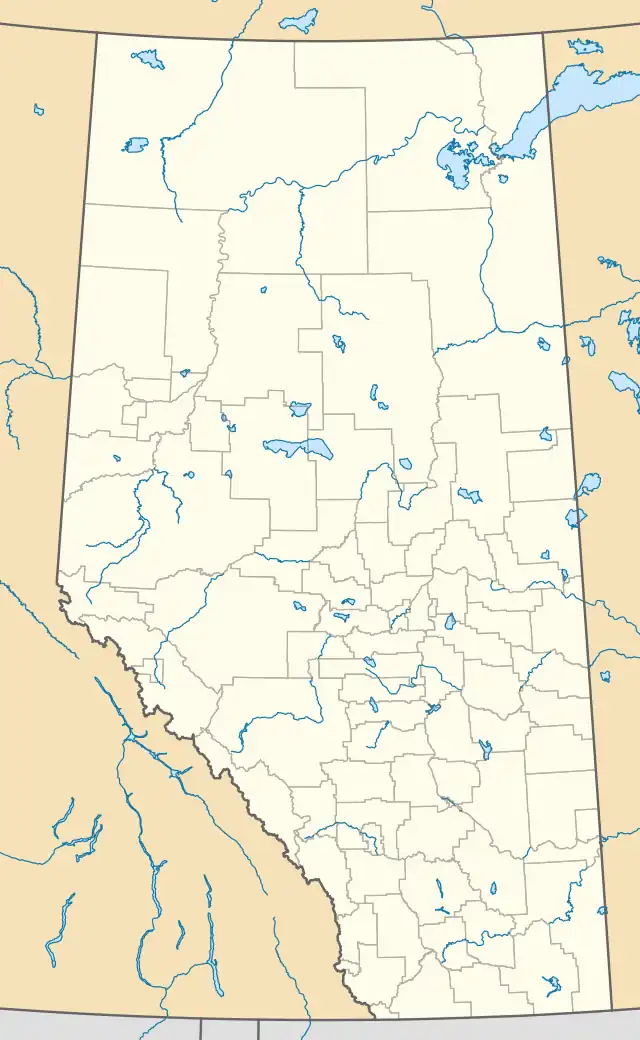Walsh | |
|---|---|
 Location of Walsh in Alberta | |
| Coordinates: 49°56′50″N 110°02′33″W / 49.9472°N 110.0425°W | |
| Country | Canada |
| Province | Alberta |
| Census division | No. 1 |
| Municipal district | Cypress County |
| Government | |
| • Type | Unincorporated |
| • Governing body | Cypress County Council |
| Area (2021)[1] | |
| • Land | 1.22 km2 (0.47 sq mi) |
| Elevation | 745 m (2,444 ft) |
| Population (2021)[1] | |
| • Total | 50 |
| • Density | 41/km2 (110/sq mi) |
| Time zone | UTC−7 (MST) |
| • Summer (DST) | UTC−6 (MDT) |
Walsh is a hamlet in Alberta, Canada within Cypress County.[2]
It is located along the Trans-Canada Highway, immediately west of the Saskatchewan border, and has an elevation of 745 metres (2,444 ft).
The hamlet is located in Census Division No. 1 and in the federal riding of Medicine Hat.
Walsh is likely named for the prominent North-West Mounted Police officer, James Walsh, who established a fort there in the early days of that organization.[3]
Demographics
In the 2021 Census of Population conducted by Statistics Canada, Walsh had a population of 50 living in 26 of its 32 total private dwellings, a change of -16.7% from its 2016 population of 60. With a land area of 1.22 km2 (0.47 sq mi), it had a population density of 41.0/km2 (106.1/sq mi) in 2021.[1]
As a designated place in the 2016 Census of Population conducted by Statistics Canada, Walsh had a population of 60 living in 27 of its 35 total private dwellings, a change of 3.4% from its 2011 population of 58. With a land area of 1.25 km2 (0.48 sq mi), it had a population density of 48.0/km2 (124.3/sq mi) in 2016.[4]
See also
References
- 1 2 3 "Population and dwelling counts: Canada and designated places". Statistics Canada. February 9, 2022. Retrieved February 10, 2022.
- ↑ "Specialized and Rural Municipalities and Their Communities" (PDF). Alberta Municipal Affairs. January 12, 2022. Retrieved January 21, 2022.
- ↑ Morrow, James Morrison (1923). Early History of the Medicine Hat County. Medicine Hat Historical Society. p. 4.
- ↑ "Population and dwelling counts, for Canada, provinces and territories, and designated places, 2016 and 2011 censuses – 100% data (Alberta)". Statistics Canada. February 8, 2017. Retrieved February 13, 2017.